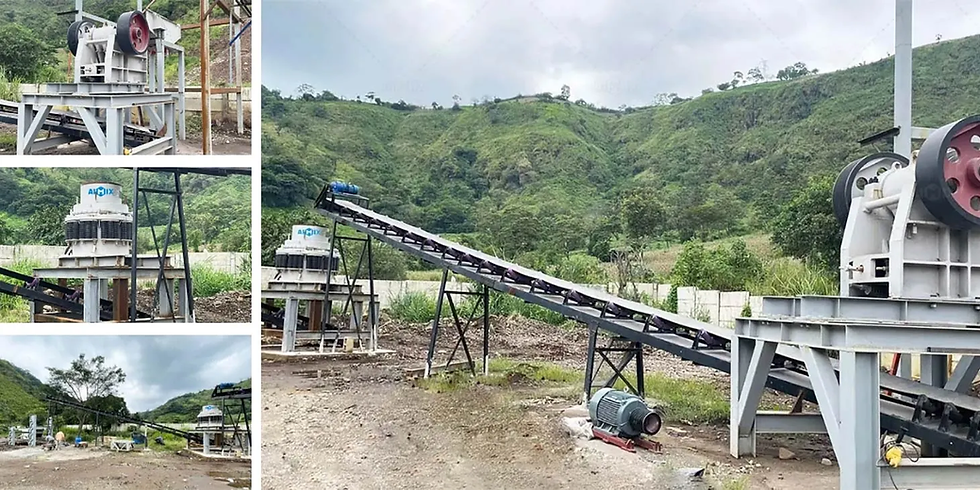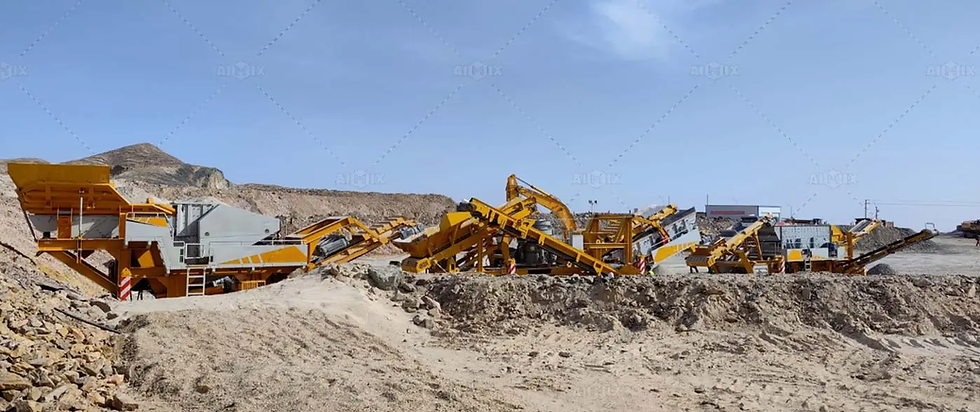Why Cubic Aggregates Matter—and How Crushers Help You Get There
- aimixgroup china
- Jul 3
- 3 min read
In the world of construction materials, not all aggregates are created equal. The shape of crushed stone—particularly its cubicity—directly influences the performance, durability, and cost-efficiency of everything from high-strength concrete to asphalt pavements. Cubic aggregates, with their geometric uniformity and mechanical interlock capabilities, deliver 20-30% greater structural integrity compared to flaky or elongated particles. Achieving this premium particle shape requires more than brute-force crushing; it demands precise equipment selection and process optimization tailored to the material's geological characteristics.
Modern aggregate crushers have evolved into sophisticated shaping tools, capable of transforming blasted quarry rock into specification-ready product with 90%+ cubicity rates. This evolution reflects the construction industry's growing recognition that aggregate shape impacts far more than aesthetics—it determines load-bearing capacity, binder adhesion, and long-term wear resistance in finished structures.

The Engineering Advantages of Cubic Aggregates
Cubical particles provide three fundamental benefits that inferior shapes cannot match:
Superior Load Distribution
The equidimensional geometry of cubic aggregates creates a more uniform stress distribution under compression. In concrete applications, this translates to 15-20% higher compressive strength ratings for the same cement content. Road base layers composed of cubical particles demonstrate 40% less rutting deformation under heavy traffic loads compared to those with flaky aggregates.
Enhanced Binder Adhesion
The textured surfaces of properly crushed cubic particles develop 50-60% stronger bonds with asphalt binders and cement paste. This adhesion advantage reduces premature raveling in pavements and delamination in concrete structures. Modern mobile impact crusher achieves this surface morphology through controlled particle-on-particle breakage rather than metal-on-rock crushing.
Optimal Packing Density
Cubic aggregates self-organize into tighter configurations, reducing void spaces by 25-30% compared to irregular shapes. This density allows asphalt mix designs to use 5-7% less binder while maintaining durability, and enables concrete producers to reduce water demand without sacrificing workability.

Crusher Technology for Cubicity Optimization
Not all crushing equipment produces equal shape results. The progression from primary to tertiary crushing must be carefully orchestrated:
Primary Stage: The Foundation of Shape
Jaw crushers with steep nip angles (22-26°) initiate cubicity by creating clean fractures along rock cleavage planes. Advanced models now feature chamber designs that promote interparticle crushing, with hydraulic systems that automatically adjust discharge settings as wear occurs.
Secondary Stage: Refining the Geometry
Cone crushers with multi-zone crushing chambers progressively refine particle shape. The latest designs incorporate variable eccentric throws that alternate between coarse reduction and particle finishing within a single revolution. This two-phase action achieves cubicity indexes above 85% even in hard, abrasive feed materials.
Tertiary Stage: Precision Shaping
Vertical shaft impactors (VSIs) with dual crushing chambers and adjustable rotor velocities provide final shaping. Some rock crusher machine models now incorporate real-time particle imaging that adjusts impact angles to maintain consistent shape characteristics despite feed variations.
Economic Impact of Cubicity Control
The financial benefits of producing premium-shaped aggregates extend across the value chain:
Higher Product Value
Cubic aggregates command 15-25% price premiums in markets serving high-specification concrete and asphalt producers. Some DOTs now include cubicity requirements in their bidding processes, creating guaranteed markets for shape-optimized materials.
Reduced Processing Costs
Properly configured crushing circuits that prioritize shape require 20-30% less recirculation than those focused solely on size reduction. This efficiency gain translates directly to lower fuel consumption and wear part costs per ton produced.
Downstream Savings
Construction teams using cubic aggregates report 10-15% reductions in placement and compaction time, along with measurable decreases in equipment wear. These savings often outweigh any premium paid for superior aggregate shape.
The shift toward cubicity-focused crushing represents more than a quality improvement—it's a fundamental rethinking of how aggregate producers create value. Modern crushers, when properly selected and operated, transform geological deposits into engineered materials that elevate the performance of every structure they become part of. In an industry where margins are measured in cents per ton, the ability to consistently produce cubic aggregates has become a key differentiator between average and exceptional operations.


Comments